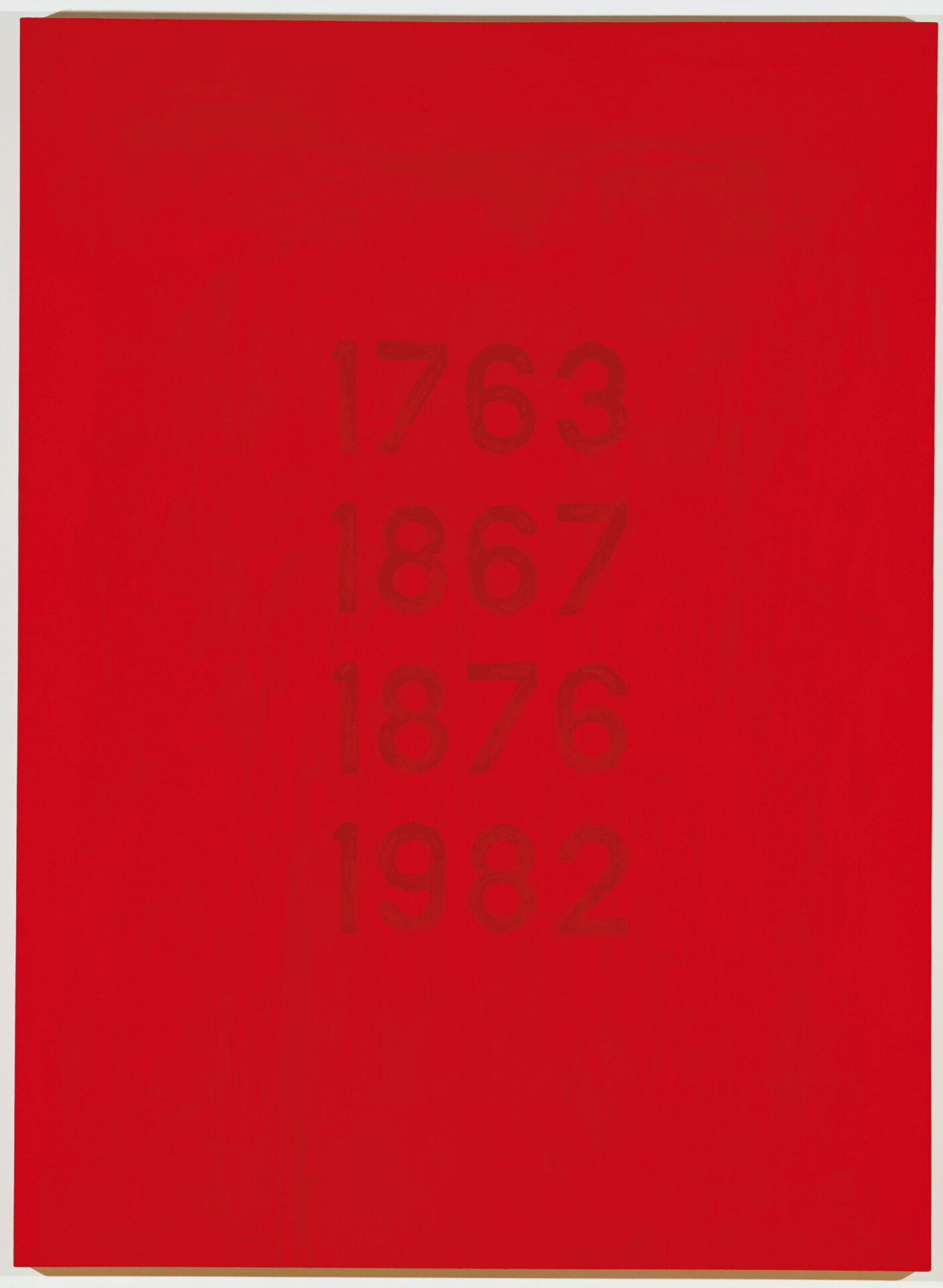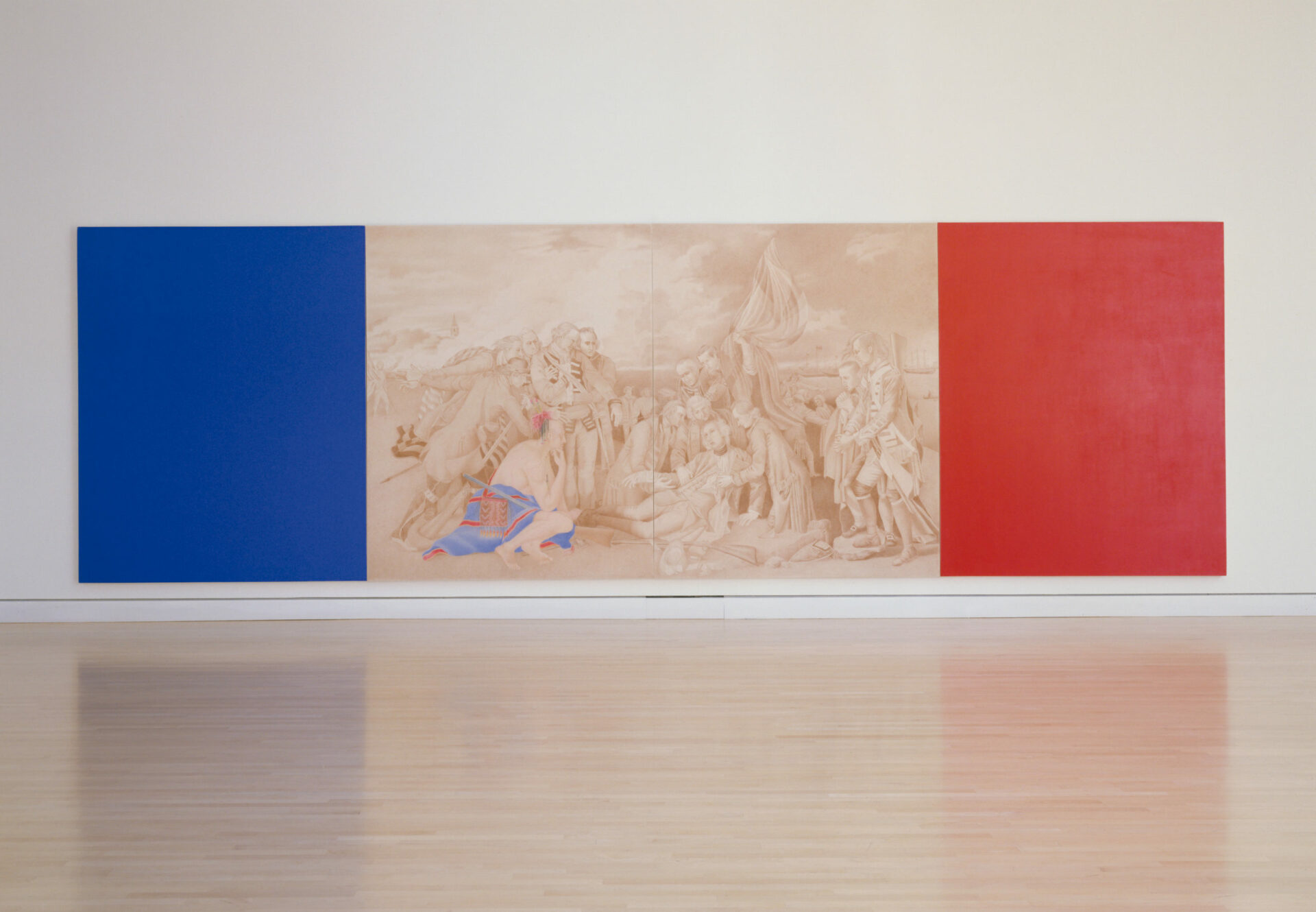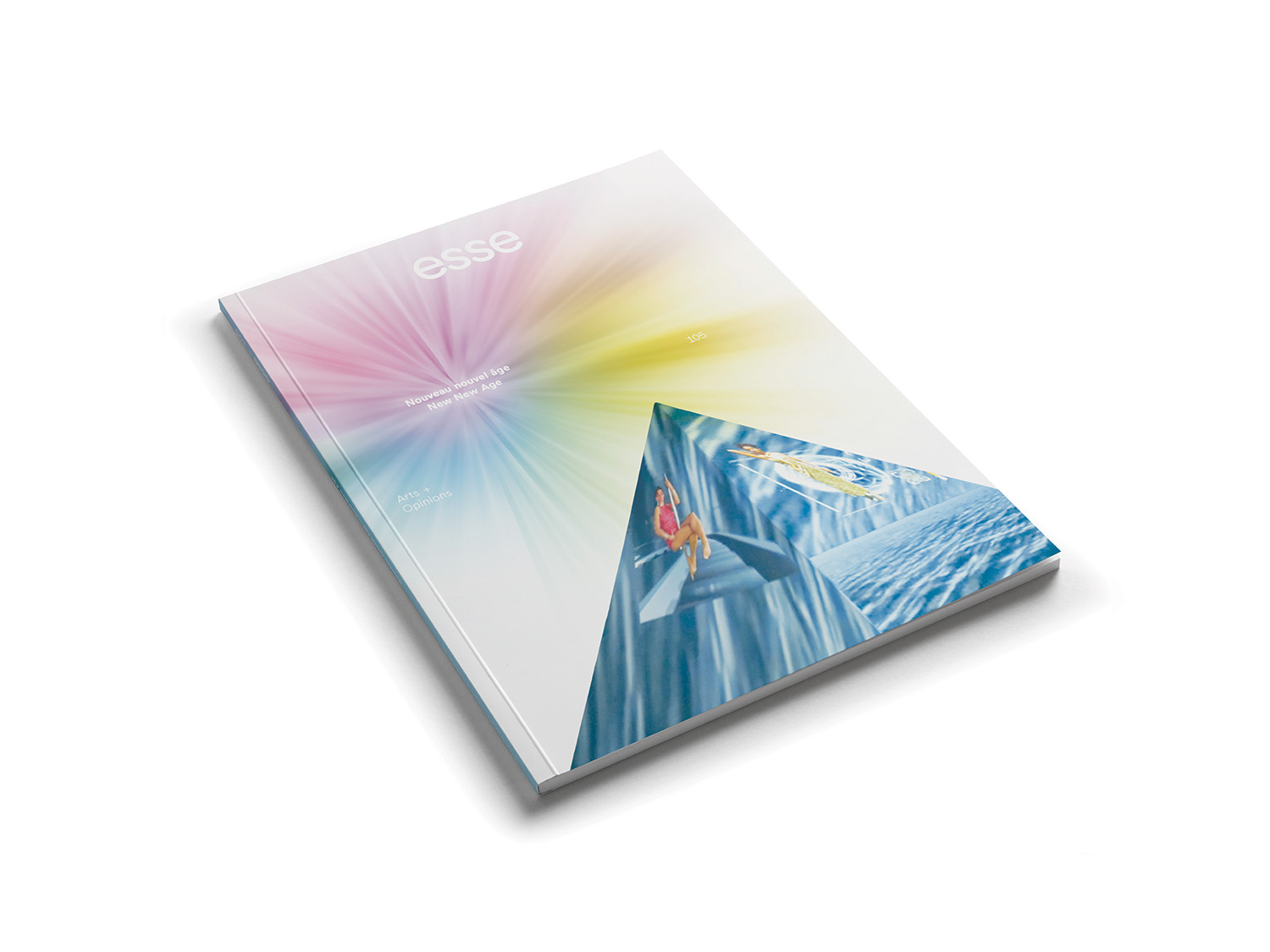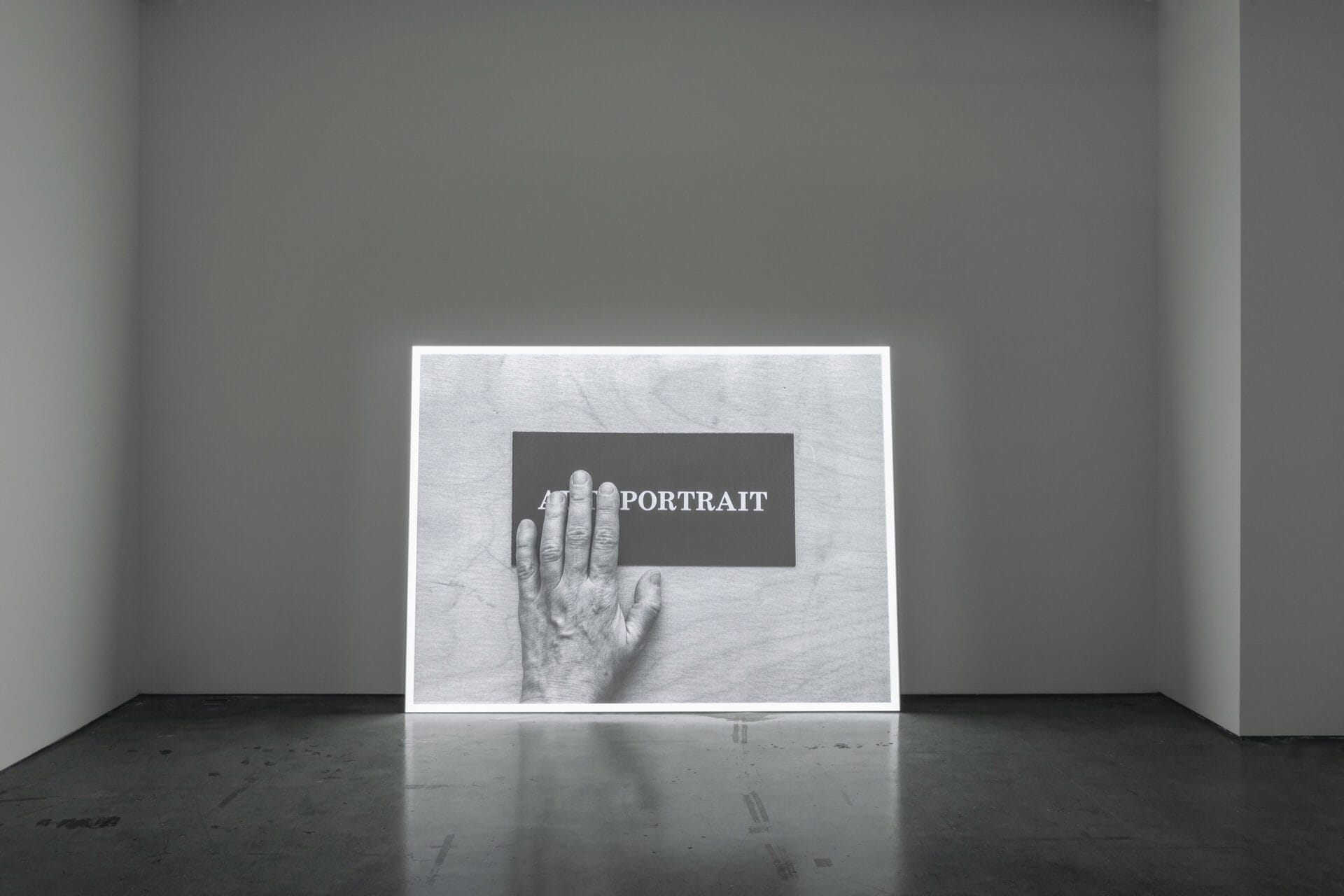
Photo : courtesy of the Art Gallery of Ontario, Toronto
December 3, 2021 — April 18, 2022
[En anglais]
For many years, Robert Houle has drawn attention to histories that have acquired new urgency in the wake of Idle No More and the ongoing identification of unmarked graves at former residential school sites across the territory now known as Canada. Robert Houle: Red is Beautiful is a powerful testament to this longstanding labour of counter-memorialization, one that demonstrates the artist’s remarkable versatility in broaching challenging themes across diverse media and formats.

Kanata, 1992, exhibition view, Art Gallery of Ontario, Toronto, 2021.
Photo : courtesy of the Art Gallery of Ontario, Toronto
The exhibition opens with a tense play of histories in which the politics of land takes centre stage. Houle mobilizes the combined resources of lyrical and hard-edge abstraction and the linguistic strategies of conceptual art to bear witness to the 1990 Kanesatake Resistance in the monumental Oka (1991) and Kanehsatake (1990 − 93). These works are installed in counterpoint to his intervention within the figurative language of European history painting, Kanata (1992), which edits Benjamin West’s glorified representation of colonial conquest in The Death of General Wolfe (1770) to highlight Indigenous presence and misrepresentation. The multi-panel Muhnedobe uhyahyuk (1989) balances these commemorations of territorial conflict with pastoral evocations of more-than-human presence. The recurring dates of Aboriginal Title (1989 — 90), Premises for Self Rule (1994), and adjacent works on paper unfold a data-based aesthetic recalling earlier examples of information art, a subfield of conceptual practice whose historiography is long overdue for diversification. Like fellow Indigenous abstractionist Alex Janvier, to whom he pays tribute in the elegantly hieratic Parfleche for Alex Janvier (1999), Houle redeploys numbers — in his case, dates — associated with treaties whose broken promises contemporary viewers are implicitly implored to honour and uphold. The exhibition is punctuated by grace notes including the jewel-like circular canvas Grandmother (drum) (2015), a historic parfleche casually inserted among Houle’s publications and pointedly credited to “Apásalooke (Crow) artists once known,” and an Assiniboia Residential School newspaper with striking cover art by a young Houle. Works commemorating his years at Sandy Bay Residential School serve as a pivot in the curatorial narrative. Otherworldly shamans and eerie shape-shifters stand watch over the first of these, Sandy Bay (1998 — 99), as if to exorcise it. The AGO’s architecture ultimately strains to contain this ambitious exhibition. Houle’s earliest canvases, which ingeniously Indigenize the formalist syntax of European forebears, including Josef Albers and Piet Mondrian, feel cramped within the narrow confines of the show’s final rooms. On the other hand, the Mississauga Portraits (2012) that occupy its centre point and commemorate a nineteenth-century troupe of Anishinaabe performers that toured Europe and inspired Eugène Delacroix, resourcefully gestures beyond this architectural frame to the related 2010 installation Paris/Ojibwa, on view on the gallery’s first floor. This centrifugal logic is amplified by Mohawk Summer (1990), a text-based work above Walker Court that nods to Houle’s permanent installation Seven Grandfathers (2014) — a critical rejoinder to an earlier textual supplement to the neoclassical court by German conceptual artist Lothar Baumgarten, which it replaced. The architecturally nested argumentation of Red is Beautiful underscores that Houle’s institutional critique will endure long after the exhibition ends.
Créez-vous un compte gratuit ou connectez-vous pour lire la rubrique complète !
Mon Compte



